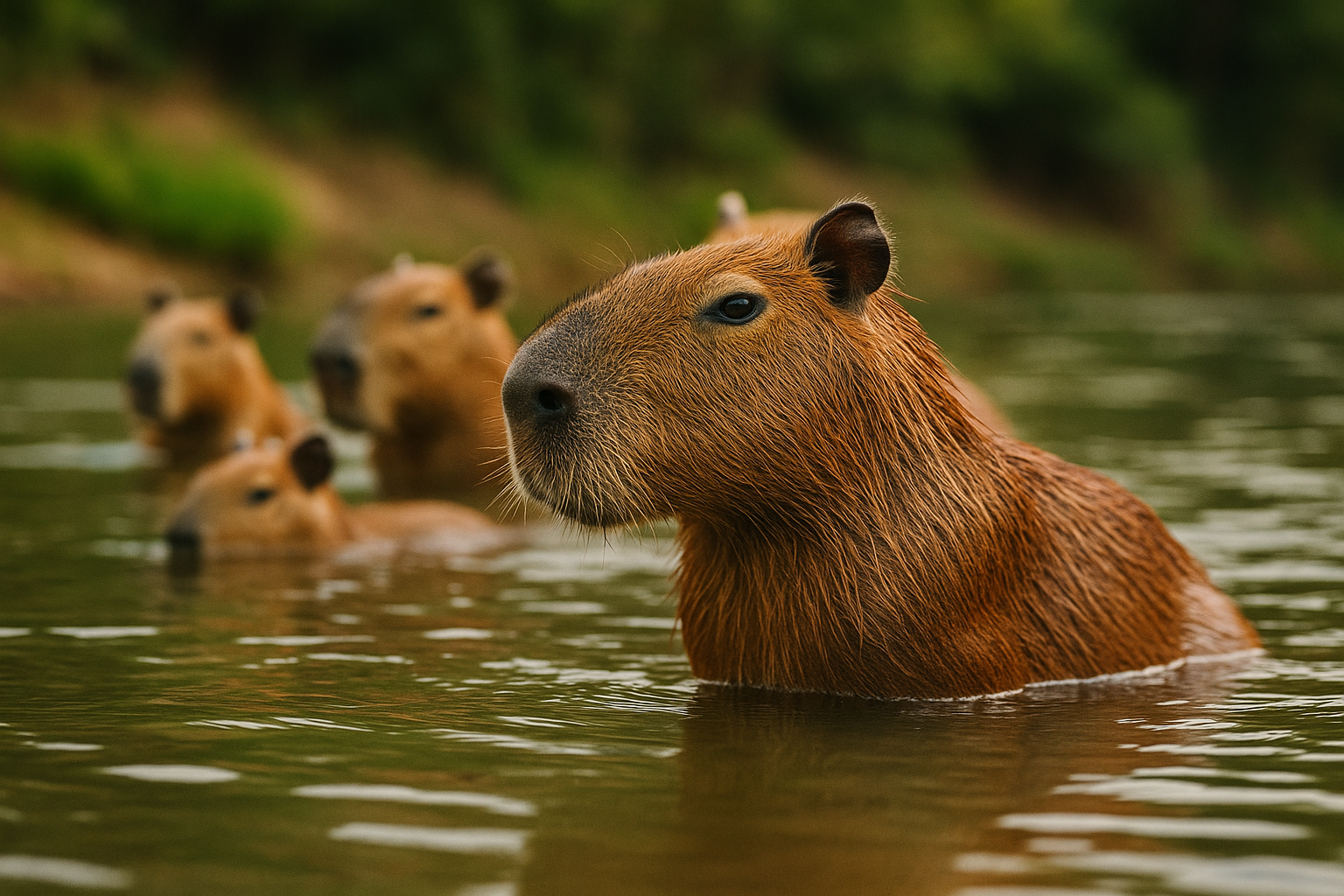The Intriguing World of Capybaras: From Wild Rodent to Adorable Pet
Capybaras, the world's largest rodents, have been quietly making a name for themselves, not just in their native South American habitats, but in homes and hearts around the globe. From their unique physical attributes to their surprisingly sociable nature, let's delve into the fascinating world of capybaras.

A Look into the Capybara’s Background and Unique Features
Initially, one might mistake a capybara for a giant guinea pig. They belong to the same family, Caviidae, and their resemblance is undeniable. However, capybaras are much larger, weighing up to 150 pounds and reaching lengths of up to four feet. Their semi-aquatic lifestyle, a unique characteristic among rodents, has led to some distinct features such as webbed feet and the positioning of their eyes, ears, and nostrils on top of their heads, enabling them to stay submerged with minimal exposure.
Capybaras: The Social Butterflies of the Rodent World
Unlike many rodents, capybaras are incredibly social creatures. In the wild, they live in groups of 10 to 20 members, led by a dominant male. This sociability extends to other species as well, with numerous internet videos showing capybaras comfortably interacting with a variety of animals. It’s this sociable and amicable nature that has made capybaras increasingly popular as pets.
The Rising Trend of Capybaras as Pets
While it’s still relatively uncommon, more and more people are welcoming capybaras into their homes. Particularly in Japan, capybaras have become somewhat of a sensation, with several parks and zoos featuring these friendly rodents as star attractions. However, it’s critical to note that capybaras are not your typical household pets. Their specific needs, such as the requirement for a swimming area and their social nature necessitating companionship, mean that they are not suitable for everyone.
The Cost and Impact of Owning a Capybara
For those seriously considering a capybara as a pet, there’s a significant investment involved. Initial costs for a capybara can range from $1,000 to $3,000. Additionally, their dietary and habitat requirements can add substantial ongoing costs. Despite these expenses, the market for capybaras as pets continues to grow, albeit slowly, with potential owners drawn to their unique attributes and sociable natures.
The Importance of Responsible Capybara Ownership
While the idea of owning a capybara may be appealing, it’s vital to consider the full implications. These are wild animals that have specific needs that can be challenging to meet in a domestic environment. Furthermore, the risk of irresponsible ownership leading to invasive populations, as has happened with other exotic pets, is a critical concern. Therefore, potential capybara owners must be fully educated and prepared for the responsibility.
In conclusion, capybaras are fascinating creatures, offering a unique blend of traits that make them endearing to humans. However, it’s essential to remember that their needs and well-being must come first, ensuring these wonderful animals can continue to thrive both in the wild and in homes where they are well cared for and loved.






